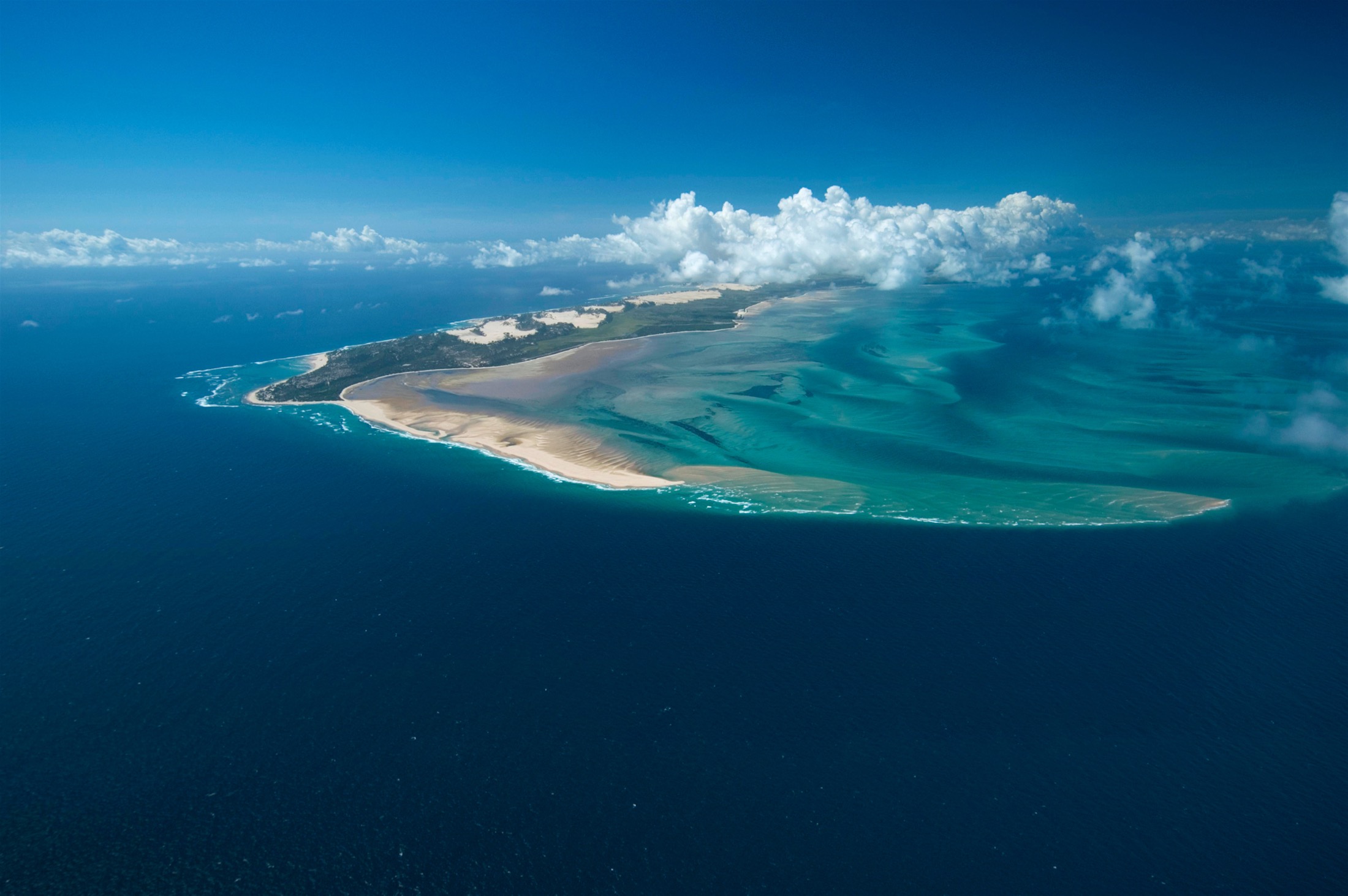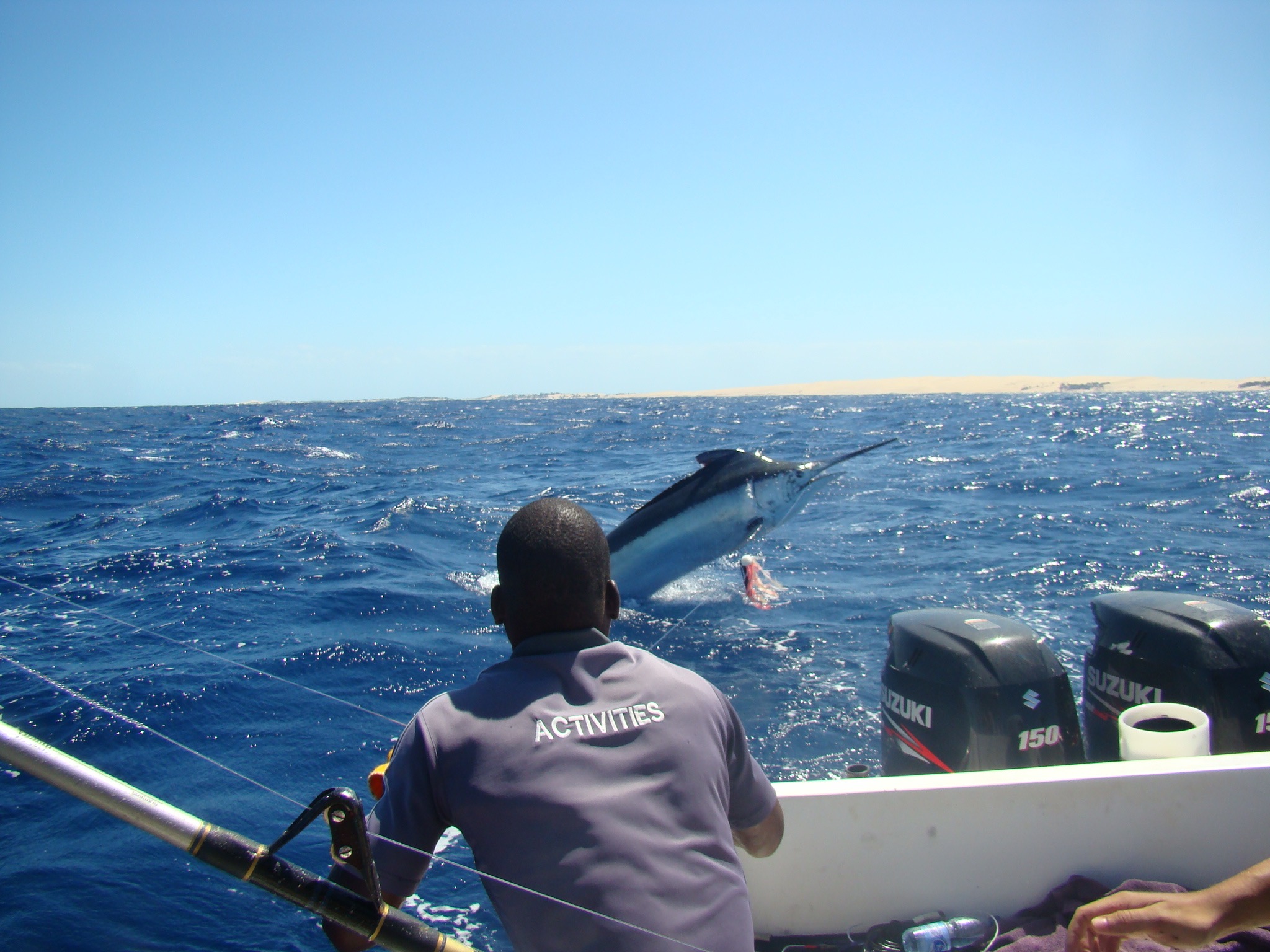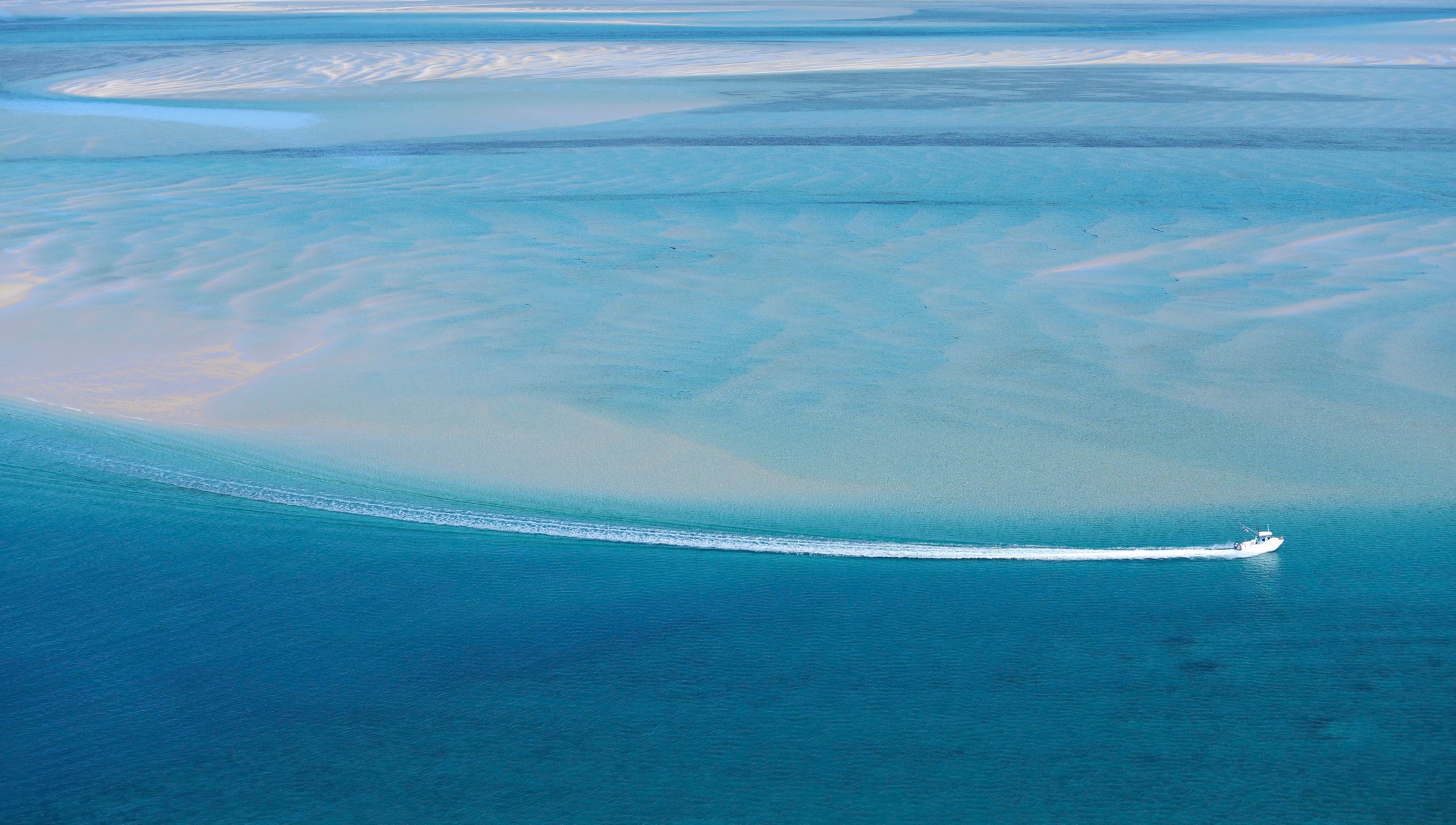 |
|||||||
|
|
||||||
|
|
||||||
Bazaruto, the unknown archipielago |
|
| By Dr. Ruperto Oliveró | |
|
|
|
|
|
|
 |
|
We left Barcelona in November, bound for Air France and from there we headed for Johannesburg - in South Africa - in a ten-hour flight, and we arrived at this place the next day - which has a time difference of one hour with respect to Spain - then we took a plane and, after two hours and fifteen minutes of travel, following a stop at the Kruger Park, we arrived at Vilánculos. There we took a small plane that took us to our final destination, the island of Benguerra and, more specifically, El Benguerra Lodge. The total trip lasted 24 hours, but the hobby for fishing can handle it all. The island of Benguerra is the second largest of the archipelago, with a length of 11 kilometres and a width of 5 kilometres and is separated from Bazaruto by a small strait at height of North Point. In Benguerra there are two lodges for deep-sea fishing, the Marlin Lodge and the Benguerra -the one we had chosen-. The Benguerra Lodge is a beautiful hotel consisting of 15 bungalows at the foot of a wonderful beach, well decorated but without doors or windows, a truly wild touch. The first day we went with two 22 foot boats, one with a South African skipper and the other with two natives, José and Lorenzo. The sea was pretty rough and since we couldn't get any bait, we had to fish with artificial bait and dead natural bait. One of my friends caught a small one, the rest nothing. What really bothered us was the lack of adequate equipment on board, as we only had an 80 pound rod. There was no harness and the combat chair left much to be desired, but at least there was a chair, as one of the boats lacked one. When we arrived we formally complained and, for the next day, we were promised a 10 metre catamaran, with poles and a combat chair. The second day was much better. We caught eight king-mackerel, between 8 and 15 kilos, and at least we had a fun day. The bad news was given to us when we got back from fishing, as the next few days 40 to 50 knots of wind from the south were expected, which made fishing practically impossible. In other words, out of our five fishing days, two were going down the drain because of bad weather and, as we couldn't do otherwise, we decided to go on an excursion to the Marlin Lodge in order to get to know its facilities. It took us an hour to walk along the beach until we reached the lodge, so we could see that perhaps they were better prepared for fishing, as their equipment was better, but the boats were just like ours. The most surprising thing is that, as the manager told us, there were no people who had gone fishing during this time - just like in our lodge–. |
|
|
|
Possibly Bazaruto was a great destination a few years ago for back marlin fishing, but today those who are going to fish are more dedicated to fly fishing and not black marlin. It is also true that in November, the time when we were there, the sailfish has already disappeared from these waters, although we saw a couple of specimens jumping acrobatically in front of our bow, in addition to the three days we went out, in none of them we could get live bonito, which is the ideal black marlin bait. |
|
 |
|
|
|
The best fishing areas are:
-Macarugue Canyons. -2 Mile Reef-Kimgfish Alley, located two miles south of Bazaruto, very good for king-makerel. -Sailfish Bay located in the eastern center of the island of Bazaruto, with numerous sailfishes. -5 mile x Whalerock, situated between Sailfish Bay and the southern port of Bazaruto. -Lighthouse/Threes Area, in the North of Bazaruto, a hot spot for the small black marlin and sailfish, also for wahoo, tuna and king-mackerel. -28 mile Reef, located seven miles north of Bazaruto, is 4 miles long and 1.5 miles wide. There are numerous GT, king-mackerel, billfish and yelowfin tuna. The most common species we can find are: -The marlin, fundamentally the Black marlin with specimens that can exceed 1000 pounds. The concentration in this water is extraordinary and there are all sizes. It is fished with live bonito, dead and sometimes with artificial samples. The best season is from September to April, being the best months from October to December and generally found in shallow water, between 20 and 100 meters deep. There are also blue and stripped marlin but you have to catch it quite far from the coast more than 20-30 miles where the continental shelf ends and the boats do not venture to get that far. -Large sailfish weighing up to 130 pounds, the best season is from May to October. -Wahoo with large specimens that can weigh up to 25 kilos, the best months from September to November. -Mahi-mahi with specimens that can reach 20 kilos, the best months from September to April. -Giant Trevally can be fished all year round. The record is a 45-kilogram specimen. -King-mackerel. It is the most abundant in this water. It is fished all year round and there are specimens that reach 35 kilos. -Sharks. The most common are the black tip shark, hammer, tiger and bull, with weights of up to 300 kilos. -Other species such as tunas -yelowfin tuna, skipjack...-, barracudas, carangos, queen mackerel, groupers, snappers and pompanos. |
|
 |
|
 |
|
 |
|
 |
|
 |
|
 |
|
 |
|
 |
|
|
||||||||||||||||||||||||||||